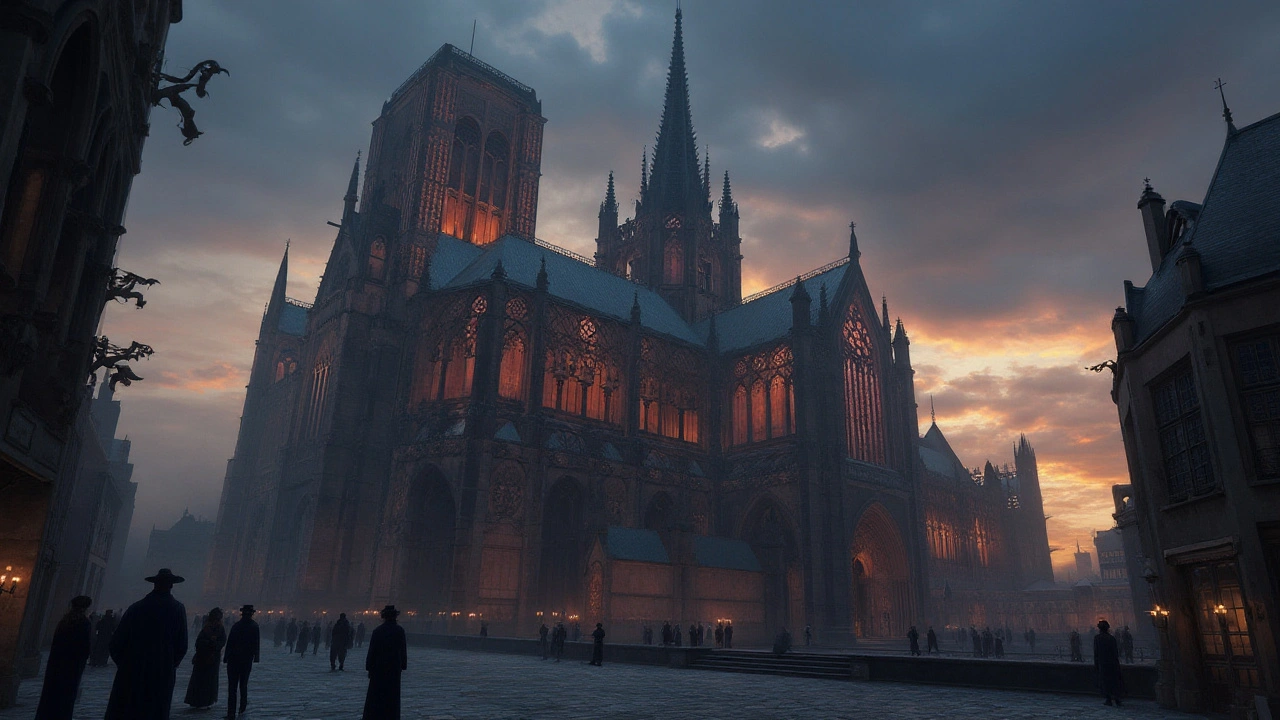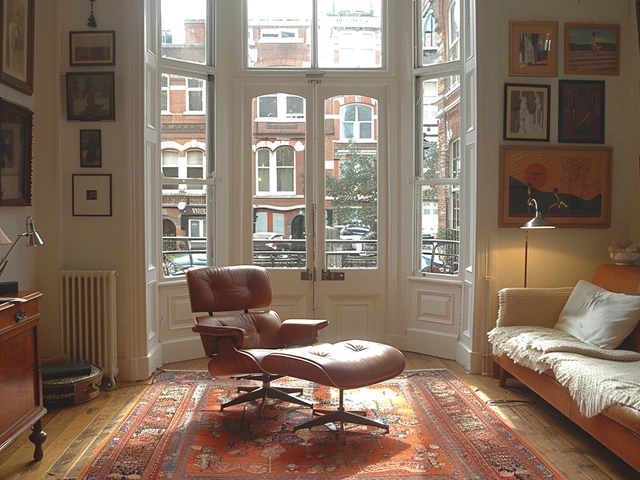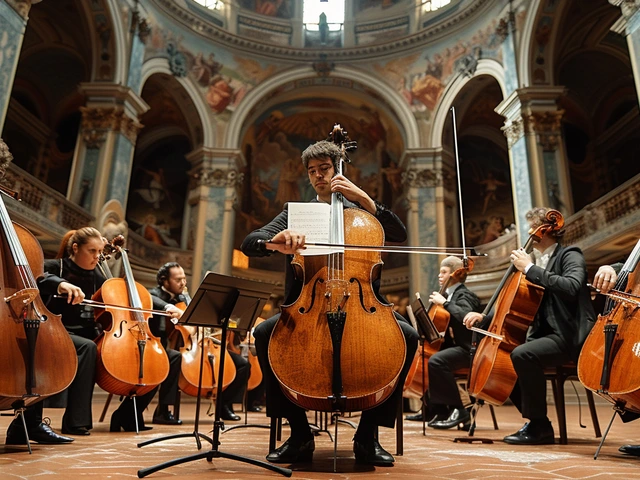Gothic art has always intrigued the curious mind with its dark yet captivating aesthetics. Nestled between the medieval knights' tales and a flourish of cathedrals, it presents a window into another realm entirely. This artistic movement was born in an era when religious expression and artistic innovation were one and the same, creating sculptures and buildings that seemed to touch the heavens.
From imposing gargoyles to the intricate arcs of flying buttresses, gothic art is dramatic, theatrical, and unapologetically bold. Every brushstroke and carved relief in gothic masterpieces has a purpose—often to reveal the mystical and the divine. What ensues is not merely artistry, but an experience that has continued to shape culture and imagination across centuries.
- The Origins of Gothic Art
- Iconic Elements and Styles
- Cultural Influence and Legacy
- Modern Interpretations of Gothic Art
The Origins of Gothic Art
Gothic art is a tale of stone and light that began in the 12th century, one that wrenched art out of Romanesque rigidity and into a new world brimming with intricate beauty and divine aspirations. The story often traces back to France, specifically to the monumental construction of the Basilica of Saint-Denis, near Paris. Abbot Suger, a visionary who breathed life into this project, dared to dream beyond the constraints of the Romanesque style and initiated a wave of change that unfurled across Europe. His focus lay on creating structures that could soar into the heavens, seeking not only to reflect the grandeur of God but also to invite His presence into the earthly domain.
Sculptures during this period took on a life-like nuance, a stark contrast from the abstract forms of prior eras. There was a push to portray human figures with more realism and emotional depth. In architecture, innovations such as the ribbed vault and flying buttress emerged, which allowed for supporting taller structures with expansive windows. Stained glass became a signature with scenes of religious and moral teachings, turning the interiors of cathedrals into holy tapestries of color. This interplay of light and structure, almost poetic in essence, was described by Suger as the "lux nova," or new light.
Suger famously observed, "The new light gleams with all its clarity."
Development did not halt in France but spread like wildfire, influencing artisans and architects in England, Germany, Spain, and Italy, where local influences surrounded the core Gothic idiom with distinct flavors. For instance, in Italy, the Gothic style mixed with Renaissance ideals, giving birth to a unique blend of artistry characterized by more rectangular and less vertically-oriented structures. Meanwhile, in England, the Gothic style matured into what's known today as the English Gothic, noted for its emphasis on length and elaborate decorative features.
The influence of Gothic art extended beyond architecture and into manuscript illumination and sculpture, areas where the emphasis on detailed realism came as a stark, welcomed change. The period saw the rise of quintessential Gothic elements such as the pointed arch and the trefoil and quatrefoil shapes that became deeply ingrained in the visual language. With the crusades influencing exchange between cultures, there was an infusion of the exotica which added further to the evolution of Dark Fantasy elements within the art.
As the Gothic era waned, it left an indelible mark—even as it transitioned and morphed into the Renaissance. Yet, the haunting beauty of Gothic art still captivates modern minds and continues to inspire new interpretations and subcultures, bridging an ancient aesthetic with contemporary creativity. Its heart beats within the shadows and light games it once championed, remaining one of history's most enduring artistic legacies.
Iconic Elements and Styles
Gothic art, with its bold interaction of light and shadow, introduces a world where every corner and crevice seems to breathe life and convey a hidden story. Its key elements revolve around an interplay of grandiosity and intricacy, often taking form in cathedrals that are nothing short of awe-inspiring. These towering structures, such as those seen in the renowned Notre-Dame de Paris, showcase vast stained glass windows. The windows are not mere decor; they depict biblical tales in brilliant hues, serving both as artistic treasures and vital storytelling instruments in a time when literacy was not widespread among common folk. It is through these masterpieces that gothic art speaks to its audience, marking time with historical and religious narratives.
Perhaps one of the most defining features of gothic art is the use of intricate ribbed vaults and pointed arches. These architectural innovations not only allowed builders to reach new heights but also gave structures an ethereal feel, drawing the eye upwards, leading them to look heavensward. Coupled with flying buttresses, this approach allowed for thinner walls and larger windows, transforming previously dark interiors into spaces illuminated with an enigmatic glow. This was an age of stone masons who were, indeed, artists in their own right. Each stone carved was a leaf of a broader narrative, capturing both faith and craftsmanship in every fragment of mortar.
"The Gothic cathedral is a blossoming in stone, subdued by the insatiable demand of harmony in man." — Ralph Waldo Emerson
Art historians often marvel at the grotesques—commonly known as gargoyles—that adorn gothic architecture. These figures, sometimes whimsical and sometimes menacing, serve dual purposes. Functionally, they act as waterspouts, diverting rainwater away from the sides of buildings, preventing weather-induced decay. Symbolically, they were thought to ward off evil spirits, preserving the sanctity of the sacred spaces they guarded. A stroll through any well-preserved gothic structure can become a journey of imagination, where each statue seems poised to spring to life and share untold tales from a time long past.
In terms of gothic paintings, the emphasis is laid on a meticulous attention to detail and emotive faces. Gothic painters embraced the use of realism, showcasing figures with expressive features that seek to elicit emotion in the observer. Notable among these works is the blending of religious themes with vivid imaginations, creating scenes of both celestial beauty and dark torment. The portrayal of suffering saints and captivating angels highlights a narrative depth, fostering a visual conversation between art, viewer, and the divine.
Interestingly, gothic art has influenced literature and fashion, leaving its spirits to wander timelessly in novels like “Frankenstein” and “Dracula.” Its style trickles into modern eras, reflecting its unnerving beauty and inviting contemplation within a darker aesthetic embrace. Providing a contrast to contemporary styles, gothic art’s legacy of complex designs and emotional resonance captivates, inviting new generations to delve into its labyrinthine allure.
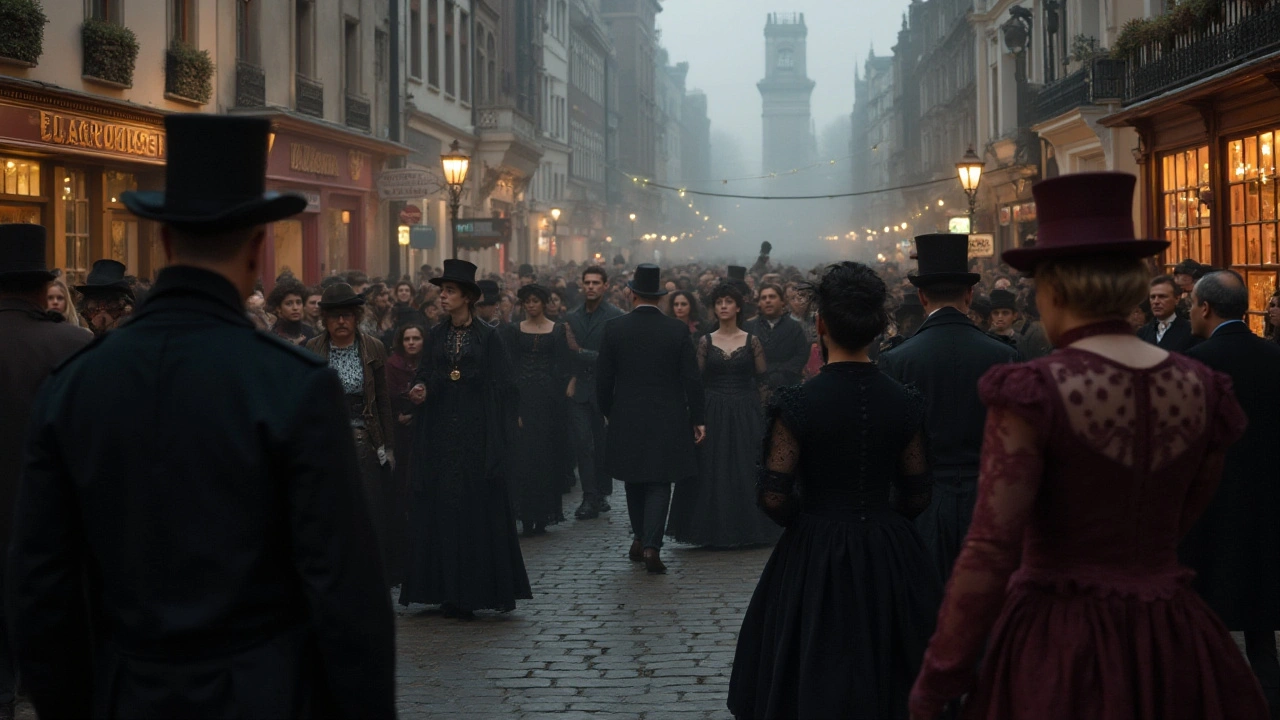
Cultural Influence and Legacy
Gothic art, with its intricate designs and dark overtones, has woven itself deeply into the cultural fabric of societies across the world. It originated during the medieval period, flourishing in an age where art was predominantly an extension of religious devotion. This movement birthed a new language in architecture, one that dramatically defined the skylines of European cities with cathedral spires reaching for the heavens. These structures weren't just places of worship; they were the community's heart, often doubling as social and cultural hubs.
One of the most striking aspects of gothic art is its power to convey complex spiritual and emotional narratives. Artists of the time embraced symbolism, which translated into art pieces that told stories through every carved stone and painted glass. This ability to encapsulate profound meanings in visuals has inspired countless artists and movements in the centuries that followed. A modern example can be seen in the works of renowned filmmaker Tim Burton, whose stylistic choices often echo the eerie yet elegant drama found in Gothic designs. As people walked beneath the sweeping arches or gazed up at the illuminated rose windows, they were reminded of humanity's smallness against the grandeur of the universe, a theme that continues to resonate today.
The legacy of gothic art extends beyond architecture and visual arts. Literature, too, felt its pull, giving rise to Gothic fiction—a genre marked by its enchanting mix of horror and romance. Writers like Mary Shelley and Edgar Allan Poe drew from the movement's shadows to craft tales that delve into the human psyche. Gothic fiction invites readers to explore the darker corners of the world and the mind, drawing them in with the same allure as the art that inspired it. An interesting facet is how the genre has permeated various media, evolving through time without losing its core essence. Its influence is evident in contemporary works across films, games, and even fashion, with subcultures embracing the gothic aesthetic for its unique blend of mystery and sophistication.
The appeal of gothic art has never truly waned. Even in today's contemporary art scene, elements of this ancient movement find renewed life. New architects and artists reinterpret gothic elements, blending them with modern technology and sensibilities to create futuristic yet reminiscent pieces. In public spaces like urban parks or modern buildings, one might find a nod to gothic arches or stained glass, subtly paying homage to a time when art aimed to bridge the earthly with the sublime. This persistent re-imagination keeps the gothic art conversation alive, an ongoing dialogue between the past and present.
"The past is never dead. It's not even past." – William Faulkner
To understand gothic art's true impact, one must look beyond the immediate visual splendor and appreciate its role as a cultural cornerstone. It stands as a testament to humanity's eternal quest for meaning, beauty, and connection with the divine. Whether through ancient stone carvings or modern interpretations, gothic art continues to invite us into its world, urging us to ponder deeper truths and perhaps see the beauty within the darkness, shaping cultures and inspiring generations in its eternal legacy.
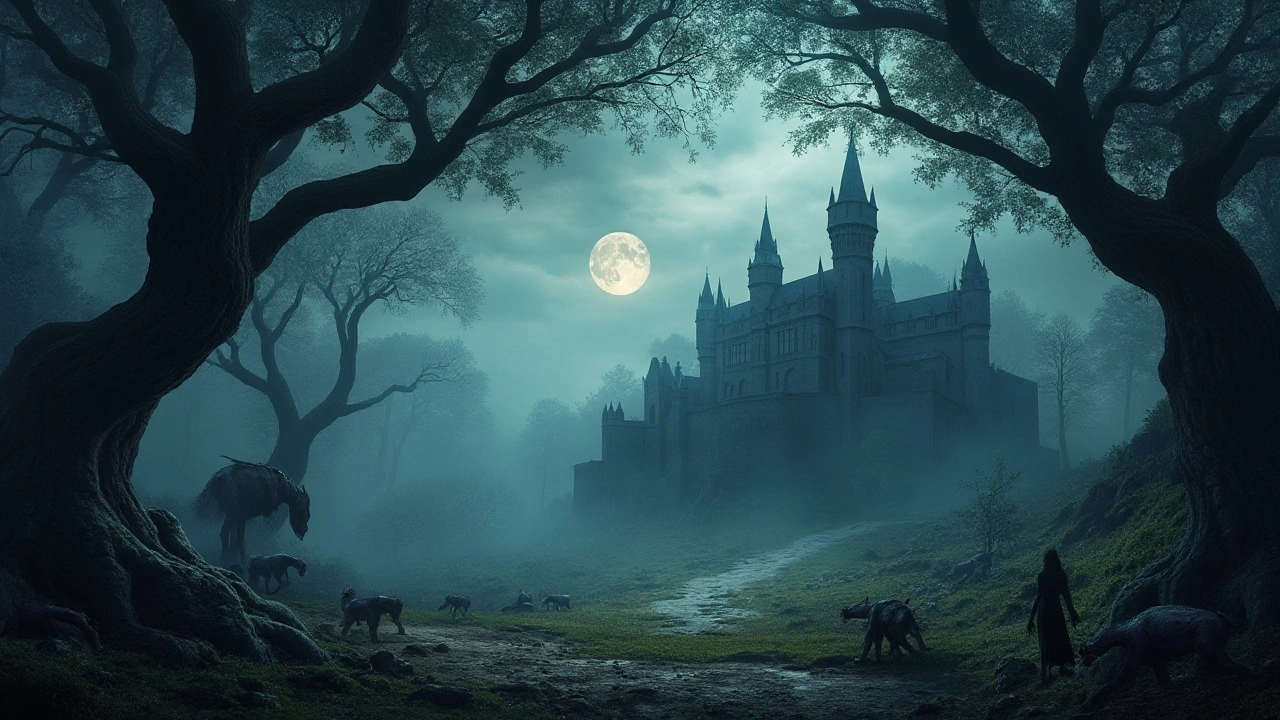
Modern Interpretations of Gothic Art
Venturing into the contemporary landscape, Gothic art continues to thrive, finding new avenues in which to express its shadowy beauty. This art form is no longer confined to the arches of ancient cathedrals or the pages of medieval manuscripts. Artists and enthusiasts today are reshaping the notion of the dark and sublime by infusing it into various mediums, including digital creations, tattoos, and even street art. The world of fashion has not been immune to this movement either, merging elements of gothic aesthetics with modern styles to create bold and rebellious statements.
One of the most significant evolutions of gothic art in the modern era has manifest in the digital realm. With the advent of sophisticated graphic software and virtual reality, artists can now create fantastical landscapes and hauntingly beautiful characters that evoke the eerie splendor of gothic art. These modern digital canvases allow for an unprecedented range of expression, restricted only by the imagination of the artists themselves. Events such as digital art shows now frequently feature pieces inspired by gothic themes, complete with intricate detailing and dynamic presentations.
Cultural historian Robert L. Scott once noted, "Gothic art is a testament to humankind’s enduring fascination with the macabre and the fantastical," underscoring its lasting impact on artistic innovation.
Another dimension of modern gothic art reveals itself through the world of tattoos; here, dark fantasy comes alive with every stroke of the tattoo needle, as individuals adorn their skin with imagery inspired by the gothic movement. These tattoos often showcase dark themes melded with personal stories, using the body's canvas to explore and express one’s inner gothic spirit. As artists push the boundaries of what can be achieved in this medium, they find new ways to retain the movement's classic elements while embracing innovative techniques and colors.
Modern interpreters of gothic art blend old with new, adhering to tradition while fearlessly inventing, which is particularly evident in literature and film. Gothic literature’s dark fantasy roots resurface in today's novels and movies, as storytellers continue to craft narratives filled with supernatural elements, mystery, and romance. Directors like Guillermo del Toro transport viewers into lavish gothic-inspired worlds, combining contemporary technology with age-old narratives rich in symbols and allegory. As this story-telling art pushes forward, it also delves back, connecting past to present.
Moreover, the cultural fascination with television shows dedicated to the bizarre and the supernatural only gains momentum, echoing the themes entrenched in gothic tradition. This ongoing cultural exploration highlights a societal craving for narratives that evoke the haunting beauty and introspection gothic fantasy offers. As long as stories explore the tug-of-war between darkness and light—a central theme in gothic work—this potent art form will continue to captivate audiences worldwide.

